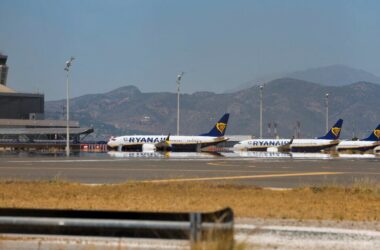Denmark’s right-wing opposition parties are setting the stage for a major political comeback, with hopes of securing a majority in the anticipated 2026 elections. Leaders from the Liberal Alliance, Conservatives, Denmark Democrats, and Danish People’s Party issued a joint statement on January 5, pledging to work hand-in-glove on proposals that outline their shared vision for a conservative Denmark.
“In the coming year, we four parties will concretize our vision for a different direction for Denmark. There is much to build upon. We will present common conservative ideas and proposals, which will gradually draw a clear picture of a conservative Denmark,” they declared.
Anders Vistisen, MEP for Patriots for Europe and Danish People’s Party MP, stressed the urgency of this coalition, calling it “essential” for Denmark’s future. Speaking to Brussels Signal on January 6, he emphasized the importance of a united right-wing front to tackle key national challenges.
“Uniting Denmark’s right-wing parties is essential at this time because the challenges our nation faces demand a strong and cohesive Right-Wing front,” Vistisen remarked. He cited issues such as unchecked migration, EU overreach, and the need to protect Denmark’s national values and sovereignty as central to their agenda.
Since 2019, Denmark’s right-wing bloc has steadily gained traction, now commanding 46 seats in parliament, representing 26.82% of elected officials—up from 24% in 2022 and just 17% in 2019. The coalition hopes to emulate the success of similar movements abroad, including Italian Prime Minister Giorgia Meloni’s right-wing coalition victory in 2023 and Marion Maréchal’s push for a unified right-wing front in France.
The four party leaders—Alex Vanopslagh (Liberal Alliance), Inger Støjberg (Denmark Democrats), Morten Messerschmidt (Danish People’s Party), and Mona Juul (Conservative People’s Party)—have accused Denmark’s centrist government of stagnation and mismanagement.
“Bureaucracy has exploded, welfare is bogged down, many local communities have been hollowed out, social cohesion is weakened, and economic growth is stagnating, driven by a few large companies,” they argued in their joint statement.
Highlighting an overburdened welfare system and rising bureaucracy, the coalition painted a stark picture of the current government’s shortcomings. The Denmark Democrats reinforced their position on January 6, reaffirming their commitment to a “strict immigration policy that protects our Danish community and cohesion.”
Meanwhile, the centrist coalition, led by the Liberal Party and Social Democrats, has taken a tougher stance on immigration in recent months, echoing rhetoric typically associated with the Right. Measures under consideration include scrutinizing citizenship applicants’ personal beliefs and restricting early retirement benefits for individuals of “non-Western” origins.
Deputy Prime Minister Troels Lund Poulsen recently announced plans to review access to early retirement pensions for “non-Western immigrants,” signaling a policy shift aimed at addressing growing public concerns.
With momentum building and voter sentiment shifting, Denmark’s right-wing parties are positioning themselves as a cohesive alternative to the current government. Their vision? A more streamlined, secure, and growth-oriented Denmark that reclaims its national identity and prioritizes the needs of its citizens. The stage is set for a political showdown in 2026.




